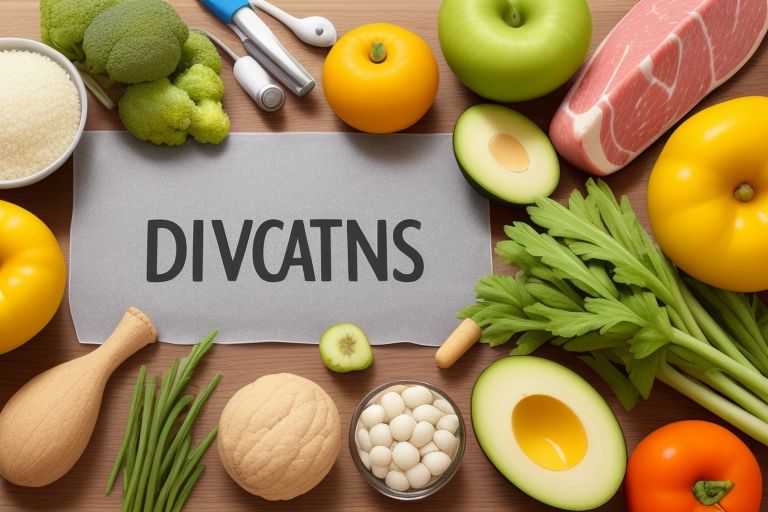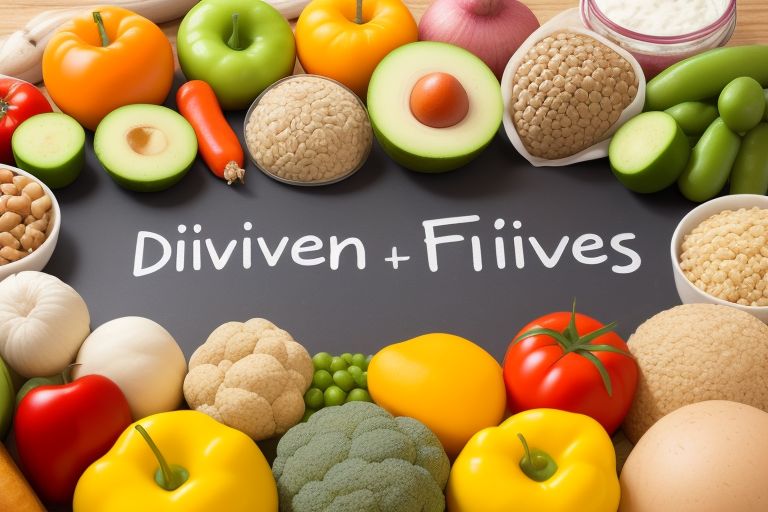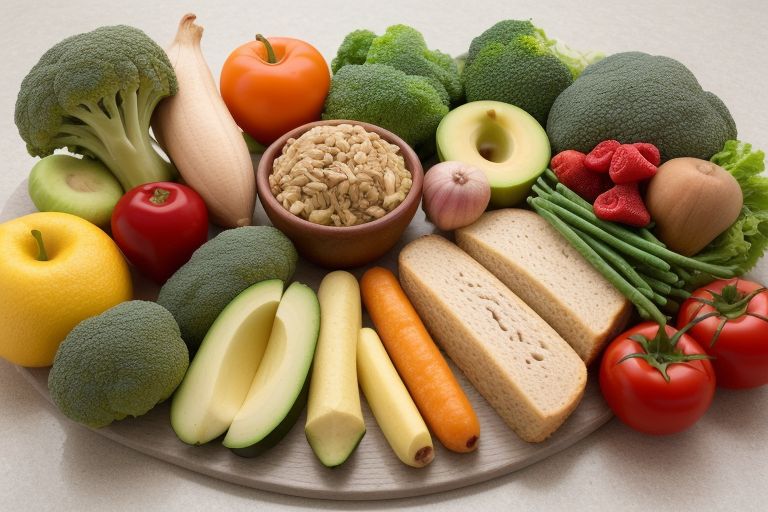7 Foods to Avoid with Diverticulitis NHS If you have been diagnosed with diverticulitis, understanding which foods to avoid is crucial for managing your symptoms and promoting healing. The NHS provides guidelines to help individuals with diverticulitis make informed dietary choices. In this article, we will discuss seven foods to avoid with diverticulitis NHS and offer practical tips for maintaining a healthy diet during flare-ups.
Diverticulitis occurs when small pouches in the colon become inflamed or infected, leading to symptoms such as abdominal pain, bloating, and changes in bowel movements. Diet plays a significant role in managing these symptoms and preventing further complications. By avoiding certain foods, you can reduce inflammation and promote healing. It’s important to consult with your healthcare provider or a registered dietitian before making significant changes to your diet.
Table of Contents
Understanding Diverticulitis: What It Is and How Diet Helps
Diverticulitis is a condition that affects your colon, which is a part of your digestive system. Tiny pockets, called diverticula, can form in the lining of your colon. When these little pockets get infected or swollen, it’s called diverticulitis. This can cause belly pain, bloating, and trouble going to the toilet. What you eat can make these symptoms worse or better. Some foods can be too hard to digest and may upset your tummy more. A soft and simple diet can help your gut rest and heal faster. That’s why knowing what to eat and what to avoid is super important. Good food choices can keep flare-ups away and help you feel better every day. Let’s look deeper into what helps and what harms.
Why the NHS Recommends Avoiding Certain Foods During a Flare-Up

Your gut is already swollen and inflamed when diverticulitis flares up. The NHS recommends avoiding certain foods because they can make the inflammation worse or be hard for your colon to digest. Foods that are high in fat, spicy, or have sharp edges (like seeds or nuts) can irritate your colon. If these foods get stuck in the small pockets of your colon, they might cause more pain or even an infection. The goal during a flare-up is to let your colon rest. Eating gentle, easy-to-digest foods can calm things down. That’s why the NHS gives advice on foods to avoid—to keep things from getting worse and help your gut heal quickly and safely.
7 Foods to Avoid with Diverticulitis NHS: A Detailed Guide
There are seven key foods the NHS and experts often suggest avoiding during a diverticulitis flare-up. These include nuts, seeds, popcorn, corn, red meat, spicy foods, and foods high in fat. These can be hard to digest or may cause tiny pieces to get stuck in your colon’s pouches. When this happens, it can make your symptoms worse. While not all people react the same way, these foods are common triggers for many. Always pay attention to how your body feels after eating and talk with a doctor about what’s safe for you. By skipping these seven foods when you’re having symptoms, you give your gut a better chance to rest, recover, and feel better faster.
Managing Diverticulitis Through Diet: Foods to Steer Clear Of
Managing diverticulitis is all about giving your digestive system the care it needs. When you’re feeling unwell or in a flare-up, some foods can make the problem worse. These include greasy foods, processed snacks, fried items, and spicy meals. These foods can slow down digestion and make inflammation in your colon worse. It’s best to keep meals simple and light. Think soft-cooked veggies, broth-based soups, and plain rice or toast. Also, drinking plenty of water helps move things along in your gut. By steering clear of certain foods and eating gently, you can avoid extra pain and get back to feeling good sooner. It’s all about finding what works for your tummy and sticking with it.
The Role of Fiber in Diverticulitis: Choosing the Right Foods
Fiber can be tricky when you have diverticulitis. When you’re not having a flare-up, fiber helps keep your poop soft and easy to pass. That’s good for preventing new flare-ups. High-fiber foods, on the other hand, can be too harsh on your gut during a flare-up.That’s why the NHS suggests a low-fiber diet during flare-ups and a high-fiber diet when you’re feeling better. The key is knowing when to add fiber back in slowly. Foods like cooked carrots, mashed potatoes, and white rice are gentle during bad times. Later on, you can try oats, fruits without skins, and soft veggies. Always go slow and see how your belly feels. Fiber is your friend—but only when your gut is ready.
Beyond the 7 Foods: Additional Dietary Tips for Diverticulitis Patients
While avoiding the main seven foods is a good start, there’s more you can do to feel better. Instead of eating big meals more often, try eating smaller ones. This puts less pressure on your tummy. Also, try not to eat late at night, as it can upset your digestion. Cut back on sugar and processed foods, as they can lead to more inflammation. Stick with natural, whole foods like boiled veggies, lean meats, and soft fruits. Avoid drinking too much alcohol, and try to stay active with light walking. These simple changes can make a big difference in your gut health. You’ll feel better every day if you choose your food more carefully.
Consulting Healthcare Providers: Personalizing Your Diverticulitis Diet

Everyone’s body is different, so it’s a good idea to speak with your doctor or a dietitian about your diet if you have diverticulitis. They can help you figure out what foods work best for you and what to avoid. Sometimes, the seven foods may not bother you—but something else might. A healthcare provider can also make sure you’re still getting all the nutrients your body needs, even with food restrictions. Don’t guess or try to do it all alone. With expert help, you can build a meal plan that keeps you safe, strong, and feeling well. It’s your health journey, and the right support makes all the difference.
Conclusion
Taking care of your tummy when you have diverticulitis is very important. Some foods can make your pain worse, so it’s best to know which ones to stay away from. The NHS gives helpful advice so you can feel better faster. If you follow a simple, soft diet during a flare-up, your tummy can rest and heal.
Remember, everyone is different. What works for one person may not work for someone else. It’s always smart to talk to a doctor or diet expert. They can help you make a food plan just for you. Eating the right foods and staying away from the wrong ones will help your tummy stay happy!
FAQs
Q: What is diverticulitis?
A: Diverticulitis is when small pouches in your colon get sore or infected. It can cause belly pain and tummy trouble.
Q: What foods should I avoid with diverticulitis?
A: Try to avoid nuts, seeds, popcorn, red meat, spicy foods, fatty foods, and corn during a flare-up.
Q: Can I eat fiber with diverticulitis?
A: Yes, but only when you’re not in a flare-up. During a flare-up, eat low-fiber foods. Add fiber back slowly when you feel better.
Q: Should I talk to my doctor about my diet?
A: Yes! Your doctor or a dietitian can help you find the best foods for your body and health.
Q: Can I drink water during a flare-up?
A: Yes, drinking water is very good. It helps your tummy work better and keeps you from getting constipated.

